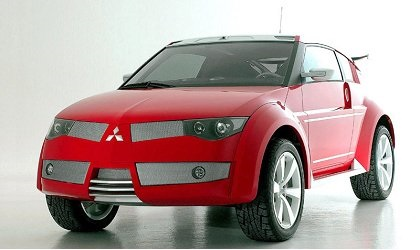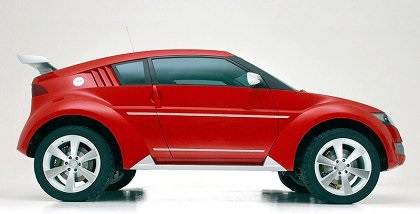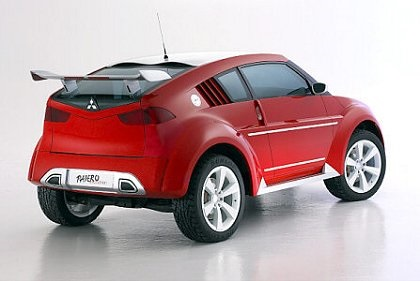2001 Mitsubishi Pajero Evolution Concept
- Story Cars
- Mar 6, 2024
- 1 min read
The 2001 Mitsubishi Pajero Evolution Concept exemplifies Mitsubishi's new development philosophy aimed at creating more competitive and exciting cars, particularly in anticipation of the new Paris-Dakar regulations. Serving as a bridge between Mitsubishi's successful rally activities and its production cars, the Pajero Evolution Concept showcases functional styling that reflects its off-road capabilities.
The concept, designed by Olivier Boulet, who was lured from Mercedes-Benz, features a distinctive Japanese aesthetic translated into a bright red two-seater coupe. Its dimensions measure 4422x1980x1724 mm, with a wheelbase of 2780 mm. The off-road essence is conveyed through large wheels equipped with Dunlop 285/45R22 tires, and an impressive wing adds to its visual impact.
Under the hood, the Pajero Evolution Concept is equipped with a 3.5-liter 24-valve V6 MIVEC engine featuring two turbochargers. This powerplant delivers an impressive 450 horsepower. The transmission is a racing 6-speed sequential shift, contributing to its high-performance capabilities. The concept employs full-time four-wheel drive, and the rear axle includes a locking device that automatically disengages at speeds over 40 km/h.
The chassis incorporates advanced technologies such as Super Select, AYC (Active Yaw Control) systems, and an active center differential. Notably, the Pajero Evolution Concept's tires are designed to remain operational for an additional 500 kilometers after a puncture, enhancing its off-road durability.
The inspiration behind this concept was drawn from Jutta Kleinschmidt's victory in the 2001 Paris-Dakar rally, marking the first female triumph in the history of the ultramarathon. The concept car pays homage to this achievement with its formidable performance and off-road capabilities. Overall, the Pajero Evolution Concept represents Mitsubishi's commitment to innovation and competitiveness in the automotive landscape.
Source & Images: Mitsubishi Motors Corporation






























